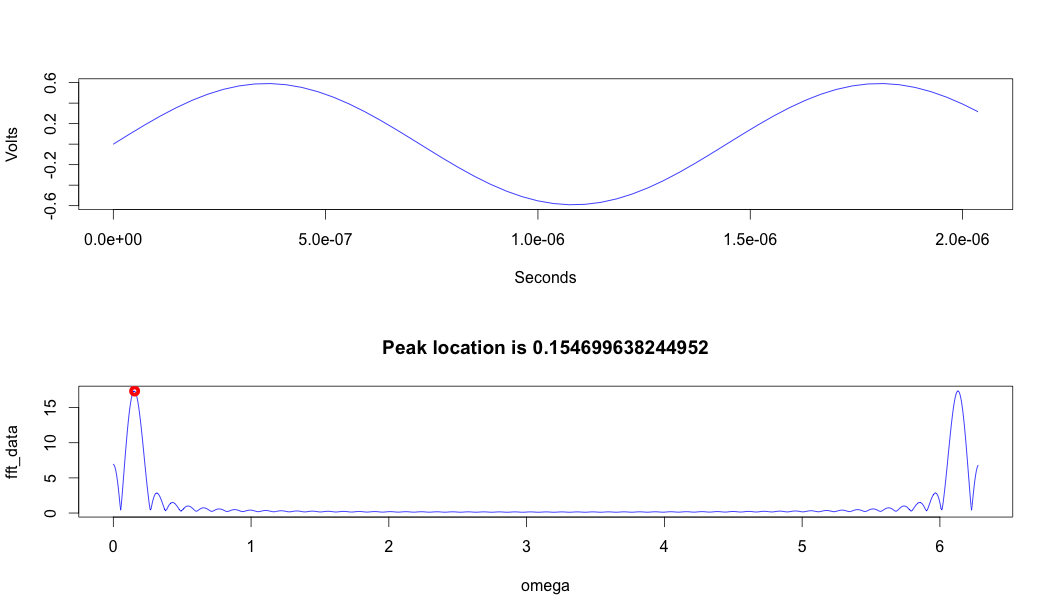I have a number of values retrieved from a sampled signal that is generated randomly for no specific purpose.
The task I am presented with (Quoted below):
calculate the frequency of the highest amplitude wave in each file. Each wave is of fixed frequency.
I was asked to calculate the frequency of each wave. How could I do this?
Each file contains values of a sampled signal:
Seconds,Volts
0, 0
5.096646E-09, 0.02255292
1.019329E-08, 0.04508986
1.528994E-08, 0.06759485
2.038658E-08, 0.09005192
2.548323E-08, 0.1124452
3.057988E-08, 0.1347587
3.567652E-08, 0.1569767
4.077317E-08, 0.1790835
4.586981E-08, 0.2010633
5.096646E-08, 0.2229007
5.60631E-08, 0.24458
6.115975E-08, 0.266086
6.62564E-08, 0.2874034
7.135304E-08, 0.3085171
7.644969E-08, 0.3294121
8.154633E-08, 0.3500737
8.664298E-08, 0.3704871
9.173962E-08, 0.3906379
9.683627E-08, 0.4105118
1.019329E-07, 0.4300948
1.070296E-07, 0.449373
1.121262E-07, 0.4683326
1.172229E-07, 0.4869603
1.223195E-07, 0.5052429
1.274161E-07, 0.5231673
1.325128E-07, 0.5407209
1.376094E-07, 0.5578913
1.427061E-07, 0.5746663
1.478027E-07, 0.5910339
1.528994E-07, 0.6069826
1.57996E-07, 0.6225011
The signal goes on and on...
This is all the information I have been provided for this task.

